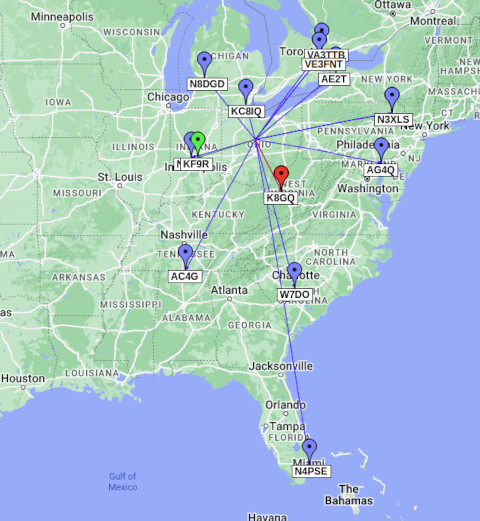POTA 160 Meter Success!
I headed out to my go-to park, Malabar Farm, K-1974 in Ohio, which is 7 miles from my house to see if I could activate on 160 meters. I arrived about 2 hours before the sun set. Even though I know that 160 meters is a nighttime band, I was excited to see how this 160 meter antenna would perform. I started out on FT8 since it is usually the first indicator when bands are open. However nobody was on. So I spotted myself and kept sending CQ POTA WB8ERJ EN80. Eventually N3XLS worked me. He was a strong +11 so the band was open, but nobody was on.
I only snagged 2 QSO’s before late shift so that gave me a failed activation. However after the sun went down, things got better. I tried some SSB and only worked K8GQ in West Virginia. Next I tried some CW, and only worked KF9R in Indiana. So it was back to FT8 and after sunset, the Reverse Beacon Network started picking up my signal and posting to the POTA page. This was helpful as I would see my own signal report. This let me know that I was at least getting out and the antenna was working.
Here is a map of all the stations I worked on my first attempt at a POTA activation only using 160 meters.

Since I only had 2 QSO’s before late shift (before 0000 UTC) that counts as an unsuccessful activation. However after 8pm EDT it was a new day, and the sun was setting. Once it was dark, 160 meters picked up a bit, but it was still sparse. Nonetheless, I was able to get a total of 13 QSO’s for a successful activation after sunset.
I was able to tune anywhere in the entire 160 meter band with my LDG autotuner, so I am pleased with the antenna. Overall I consider this new addition of the 160 meter loading coil a success, and plan on more 160 meter POTA activations.
— Mike WB8ERJ
Leave a Reply